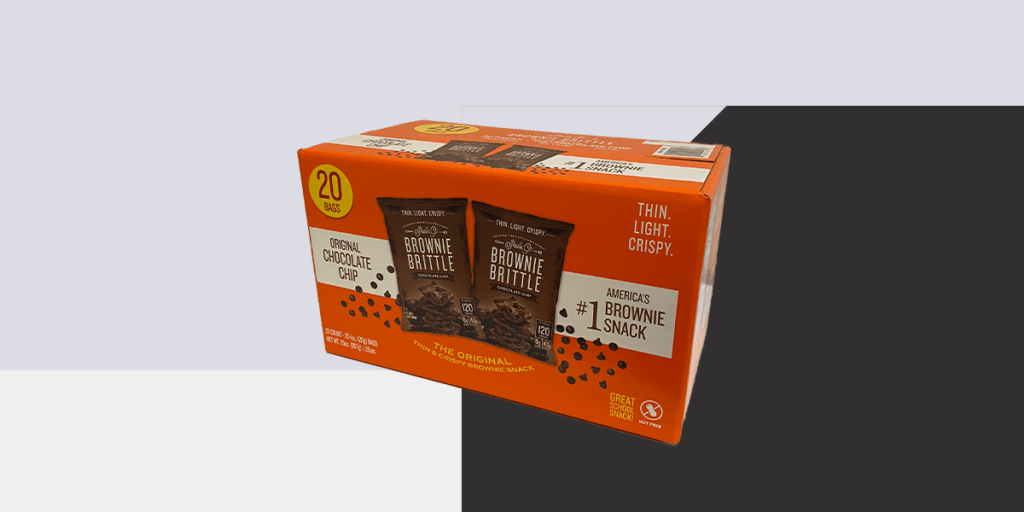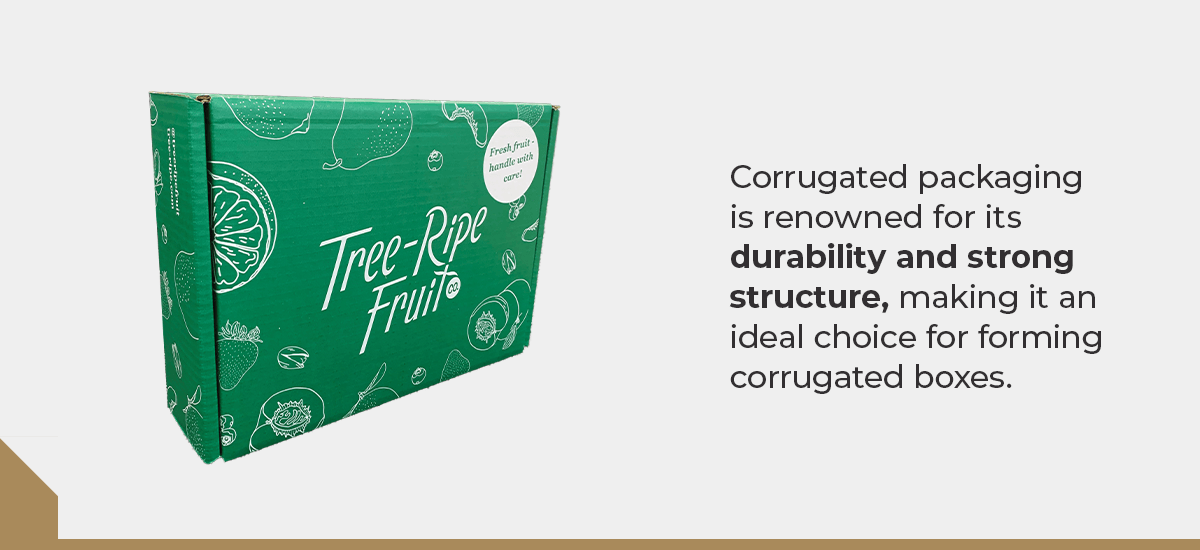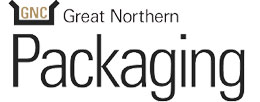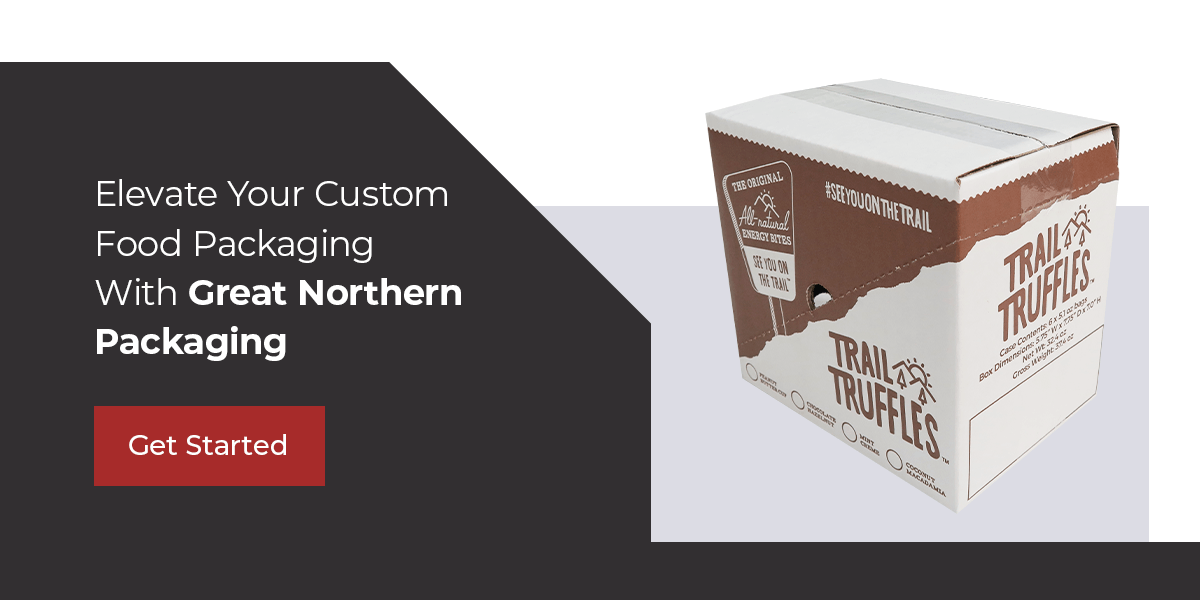
Packaging protects your products during transportation and storage while also playing a critical role in food safety. Therefore, it’s vital to package food products correctly, following Global Food Safety Initiative (GFSI) standards to ensure they arrive at their destination in optimal condition and meet food safety requirements.
Whether you’re a small business owner or part of a larger organization, in this complete guide to packaging food in custom boxes, we’ll take a deep dive into food packaging, food safety, GFSI standards and everything you need to know about packaging food in custom boxes.
What Is Custom Food Packaging?
When packaging food products, one size doesn’t fit all. That’s where custom packaging comes in. Custom food packaging must meet the specific needs of your product, ensuring that it remains fresh and protected during shipping and storage. Custom packaging also provides a branding opportunity, allowing you to showcase your unique product and brand to customers.
Custom food packaging can come in various shapes, sizes and materials, from boxes and plastic containers to paper bags and glass jars. Choosing food-safe packaging materials that are compatible with your product’s needs is essential. For instance, if you’re packaging liquid or semi-liquid foods, you’ll need leak-proof packaging materials that can handle the product’s weight and prevent spills. Similarly, if you’re packaging fragile foods like baked goods, you’ll need sturdy packaging that protects them during shipping and handling.
Custom packaging can also feature your brand’s logo, design and color scheme, making it a powerful marketing tool. It’s an opportunity to make your product stand out on store shelves or online platforms, attracting customers and increasing brand recognition.
Custom food packaging is a tailored approach to packaging food products that meets specific requirements while ensuring food safety. Custom packaging materials can vary, depending on the product’s needs and offer an excellent branding opportunity for businesses. With custom packaging, you can create a unique and memorable experience for your customers, leading to increased sales and brand loyalty.
Are Corrugated Boxes Safe for Food?
Corrugated packaging is not only sustainable but also offers a popular and trusted option for packaging various products, including food. While the corrugated boxes we’re referring to won’t directly touch the food items, they play a crucial role in ensuring the safety and protection of the products.
Corrugated packaging is renowned for its sustainability, durability and strong structure, making it an ideal choice for forming corrugated boxes. It consists of two flat liner boards on the outside, with a rippled sheet sandwiched between them and adhered with starchy glue. This construction provides stability and strength to the boxes.

When it comes to food packaging, safety considerations are of utmost importance. Corrugated boxes are designed to comply with food safety regulations and certifications. As a sustainable packaging option, they do not contain harmful chemicals that can leach into the food, ensuring the integrity and safety of the packaged products inside.
The benefits of using corrugated packaging for food are numerous:
- Protection: The multilayer design of corrugated packaging acts as stable cushioning, safeguarding the food products from impact and maintaining their quality. Additionally, corrugated boxes effectively shield the contents from moisture, keeping them dry and preserving their freshness.
- Cost-efficiency: Corrugated packaging is also cost-efficient for businesses. Its lightweight nature reduces shipping costs compared to heavier materials.
- Customization: Corrugated boxes can be easily customized to meet specific needs. Personalized labels, graphics, colors and text can be added to enhance branding and product identification.
- Environmentally friendly: Furthermore, corrugated packaging consists of organic and recyclable materials, promoting sustainability — allowing it to be reused or recycled, reducing waste and minimizing the environmental impact.
To sum it all up, corrugated boxes are a safe and reliable option for food packaging. Their sturdy structure, cost-efficiency, flexibility, customization options and eco-friendliness make them a preferred choice for consumer packaged goods companies seeking reliable and sustainable packaging solutions.
Selling in the Mass Market and Club Store Channels
When it comes to selling your food products in the mass market and club store channels, packaging plays a critical role in attracting consumers and ensuring success on the shelves. Understanding the specific requirements and considerations for these channels can give your products a competitive edge.
For mass market retailers, meeting packaging guidelines and requirements is crucial. Each retailer may have specific guidelines regarding packaging materials, sizes, labeling and display requirements. It’s essential to familiarize yourself with these guidelines and ensure compliance to avoid any issues or delays in getting your products on the shelves. Additionally, optimizing shelf appeal and visibility is vital. Eye-catching designs, clear branding and concise product information help your products stand out in the crowded retail environment and attract consumers’ attention.
In club store channels, where products are typically sold in bulk, different packaging considerations come into play. Wholesale distribution requires bulk packaging options that can efficiently accommodate larger quantities of products. Consider designing packaging that allows for easy stacking, palletization and handling in the club store environment.
Meeting club store packaging size and labeling requirements are also crucial. Club stores often have specific packaging size limitations to fit their shelving and storage systems. Ensure that your packaging adheres to these requirements to facilitate efficient stocking and display. Clear and prominent labeling is equally important, providing essential product information and complying with club store labeling regulations.
By understanding the packaging requirements and considerations for mass market and club store channels, you can position your food products for success. Well-designed, compliant packaging will not only enhance the visibility and appeal of your products but also facilitate efficient distribution and stocking, ultimately driving sales and consumer satisfaction.
Tips for Shipping Food in Corrugated Boxes
When shipping food products, it’s crucial to ensure that they arrive at their destination fresh, safe and intact. One of the best ways to do this is using corrugated boxes for food packaging. Corrugated boxes are sturdy and durable and can protect your food products during transportation. Here are some tips for shipping food in corrugated boxes:
- Choose the correct size box: It’s essential to choose the right size box for your food products to prevent damage during shipping. Parcels that are too large can allow for shifting and movement of the contents, leading to breakage or spoilage. Boxes that are too small can also damage the contents by compressing them.
- Use food-safe packaging materials: When packing your food products in corrugated boxes, be sure to use food-safe packaging materials, such as plastic bags or containers. This will help to prevent contamination and preserve the freshness of your food products.
- Label the box as fragile: If your food products are delicate or require careful handling, be sure to label the parcel as “fragile.” This will help to ensure that the package is treated with care during shipping and reduces the risk of damage.
- Seal the box properly: Be sure to seal the corrugated box properly with packing tape to prevent the contents from falling out or getting damaged during shipping. Use enough tape to create a strong seal, but do just what is necessary, as too much tape can make it difficult to open the box.
- Consider temperature control: If your food products are temperature-sensitive, it’s important to consider temperature control during shipping. Use insulated boxes or add ice packs to help maintain the proper temperature during transportation.
By following these tips for shipping food in corrugated boxes, you can ensure that your food products arrive at their destination fresh, safe and intact.
Elevate Your Custom Food Packaging With Great Northern Packaging
Custom food packaging plays a pivotal role in the success of consumer packaged goods companies in the mass market and club store channels. Throughout this guide, we explored various aspects of packaging food in custom boxes.
To ensure your products are protected during shipping, attractively displayed on shelves and aligned with sustainable practices, consider partnering with Great Northern Packaging. With our extensive experience, innovative solutions and commitment to customer satisfaction, we are equipped to meet your unique packaging needs — from printing and manufacturing to testing and supply chain management. As a certified ISTA facility, we prioritize quality and safety in every aspect of our packaging solutions.
Contact us online and discover how our sustainable food and beverage packaging solutions can enhance your brand’s presence in the market.







